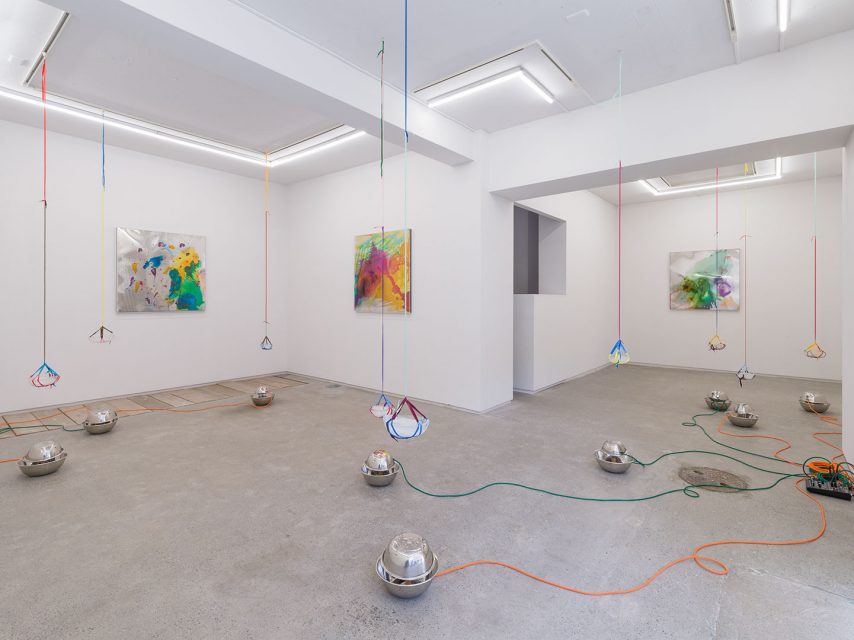Take Ninagawa, Tokyo
Group Exhibition|March 9 – April 3, 2021
Take Ninagawa is pleased to present works by Aki Sasamoto and Tsuruko Yamazaki as part of Galleries Curate: RHE.
Galleries Curate
In the first days of the Covid-19 pandemic, an informal group of contemporary galleries from around the world came together to discuss how to navigate through the new challenges of the global crisis as it affected our artists, staff and businesses. The relationships among us over weeks of exchange became close and essential and we discovered that while the pandemic had broken many things apart, it had also brought us together. A supportive sense of community ignited positivity and cooperative interactions, and the initial group of twelve grew to twenty-one. As an expression of this unity we initiated Galleries Curate, a collaborative exhibition designed to express the dynamic dialogue between our individual programmes.
Galleries Curate: RHE is the first chapter of this collaboration, an exhibition and website themed around a universal and, we hope, unifying subject: water. Like culture, water is never static but always in flux. From January 4th until May 30th, 2021, a total of 21 exhibitions will be presented concurrently on our online platform and the exhibition spaces of the participating galleries.
RHE
RHE (from Greek for that which flows) is a platform for exhibitions, performances, and public interventions that loosely address the theme of water—geographically, politically, economically or metaphorically. Involving projects with twenty-one galleries, both online and on-site, RHE was conceived to span regions, markets, cultures, and audiences around the world, circulating both within and outside of traditional white-box exhibition spaces.
Why RHE?
RHE is evocative of unity and impermanence, both central concepts in Heraclitean philosophy, expressed most famously by his saying, panta rhei [everything flows]. Through water, we are all connected, physically as well as metaphorically.
Aki Sasamoto, Talking in Circles in Talking, 2021 ©︎ Aki Sasamoto. Courtesy of Take Ninagawa, Tokyo.
Aki Sasamoto is a New York-based Japanese artist who works in performance, sculpture, dance, and whatever other medium it takes to get her ideas across. Her works have been shown both in performing art and visual art venues worldwide. She has collaborated with musicians, choreographers, scientists and scholars, and she plays multiple roles as dancer, sculptor, or director.
Sasamoto’s performance/installation works revolve around gestures of nothing and everything. Her installations are careful arrangements of sculpturally altered found objects, and the decisive gestures of her improvisational performances create feedback, responding to sound, objects, and moving bodies. The constructed stories seem personal at first, yet oddly open to varying degrees of access, relation, and reflection.
Talking in Circles in Talking (2021) is an inquiry into the extent the human body can be transformed into a physical object, much like how our consciousness of a dead person can be turned into a memento. Melting ice blocks contain things that carry people’s memories. The drips of the ice and the sounds of the falling objects are amplified via hand-made contact microphones attached to the cooking bowls.
Tsuruko Yamazaki, Work, 2011 ©︎ Estate of Tsuruko Yamazaki. Courtesy of LADS Gallery, Osaka and Take Ninagawa, Tokyo.
Born in 1925 in Ashiya, Hyogo Prefecture, Tsuruko Yamazaki was a founding member of the Gutai Art Association. Formed in 1954, the Gutai group innovated practices such as happenings and site-specific installations through events including the Outdoor Gutai Art Exhibition, held at Ashiya Park in 1956, and Gutai Art on Stage, held at Sankei Hall in Tokyo in 1957.
From the start Yamazaki pushed Gutai’s focus on the concrete and the material into radical directions. She frequently experimented with reflective surfaces and projected light, both dematerializing the work and inviting viewers to become part of the material. Yamazaki said her interest in light was inspired by the urban environment of the postwar period in Japan, where, with few ambient light sources, the headlights of passing cars catching upon scrap metal, bits of glass, and other street detritus would scatter the darkness with sudden bursts of illumination.
One of Yamazaki’s most recognizable works, Untitled (2011, 2012), was made by applying dye and lacquer to tin panel, which was a typical construction material in post war Japan. Yamazaki created the image improvisationally by moving the panel with her hands. Having debuted the work at the 4th Gutai Art Exhibition at Ohara Kaikan Hall in Tokyo in 1957, Yamazaki revisited the work in her later life through a series of tin panel pieces that would become her last paintings.


